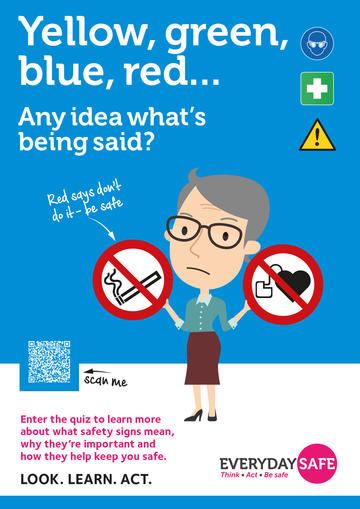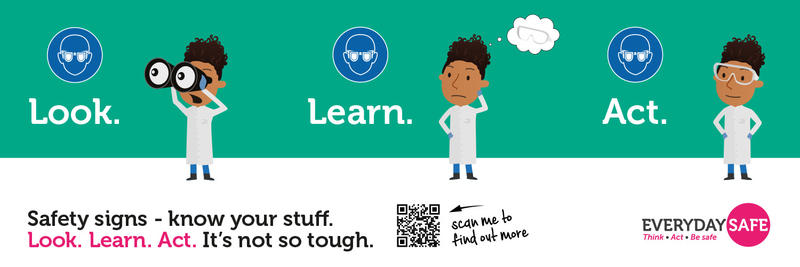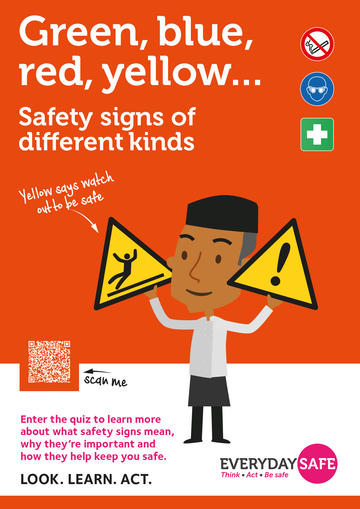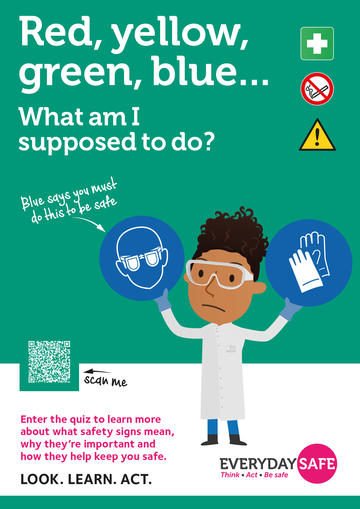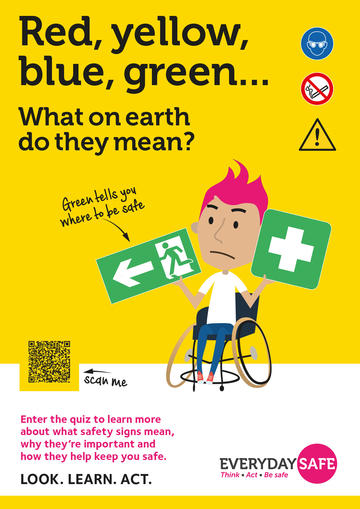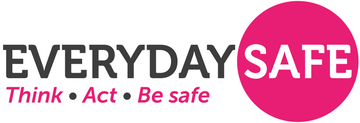Find out more
In the workplace, you will encounter safety signs in a variety of locations. Dr Chris Williams, University Safety Officer, demonstrates this in the latest EveryDaySafe video, in which she points out appropriate safety signage in place around the University.
Have a go at our latest EveryDaySafe quiz, which will test your knowledge on different types and examples of safety signs and why they’re important in the workplace, along with some signs trivia.
You can find further information on all the types of safety signs and their meanings in the HSE Guidance.
Campaign materials
You can access more details about the safety signs campaign in the communications pack, and a range of materials, from the EveryDaySafe folder in the UAS comms SharePoint. These include a series of posters (for local printing or via the Print Studio) and an animation, banner image and text content for digital screens, department intranets, newsletters and social media channels.
Help with safety signs in departments
Departments needing to renew, modify or supplement safety signs should contact the Safety Office, where a limited range of self-adhesive signs are available free of charge. If the Safety Office is unable to provide the required signs, departments should purchase these directly - a number of suppliers are available online, including Seton who can produce bespoke safety signs.
Advice is also available from your departmental safety officer.
Policy
The Health and Safety (Safety Signs and Signals) Regulations require the use of safety signs whenever there is a risk to health and safety that cannot be avoided or controlled by other means.
Details on when signs should be used and the standards by which they should comply are set out in the policy.
